Haluski Recipe (Polish fried cabbage & noodles)
Every culture has their own idea of what constitutes real comfort food. This haluski recipe is one of ours. It features savory caramelized cabbage & onion bathed in a rich butter sauce and tossed with rich egg noodles to soak up every ounce of flavor.
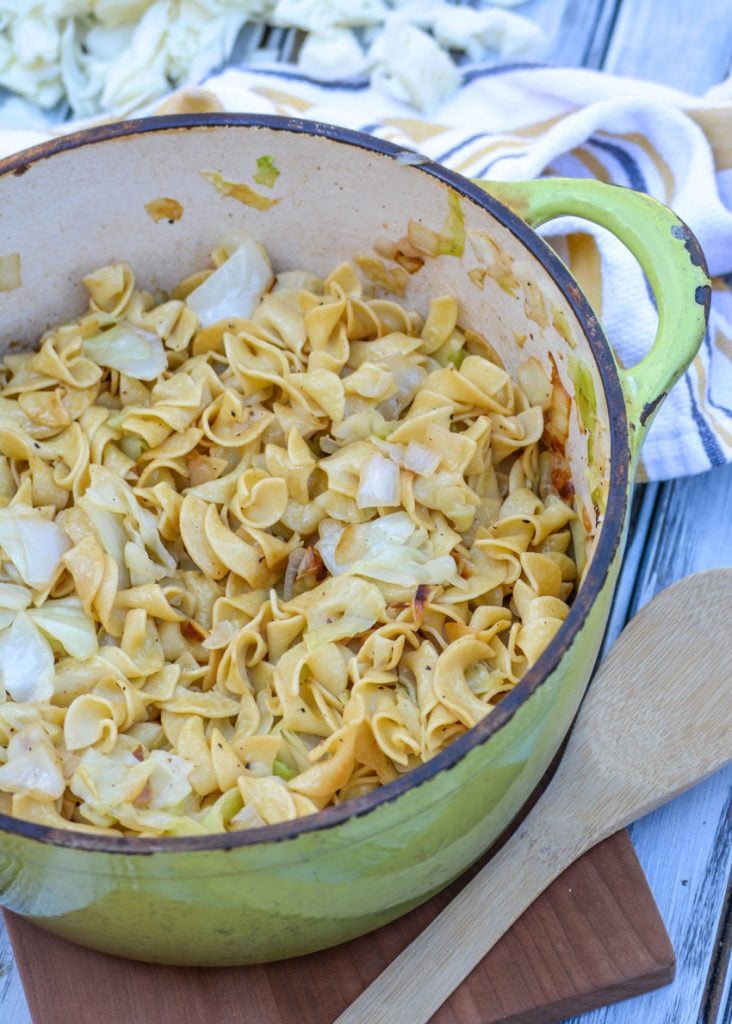
I’ve been with husband for years, but it was only about 5 years ago or so that I discovered he’d been living a lie. Well, that makes it sound extreme- it wasn’t that bad.
So my FIL is 100 % full-blooded Italian on both sides. My MIL on the other hand was always a bit off hand about her heritage. She alluded to the fact that she was Italian, with some Slovak and Polish roots in the mix.
Still a cool mix culturally. But we have since found out that she isn’t any parts Italian, but instead was raised in an Italian area and being married young adapted to the culture. Makes sense to me!
Her natural heritage is half and half, a mix of Slovak and Polish. Her father died young meaning that a lot of his culture and traditions went with him, but she remembers a lot of the traditional recipes her mother made that she she grew up eating.
These included stuffed cabbage leaves called halupki, delicious potato filled dumplings called pierogi, and one of the ultimate simple comfort foods- Haluski.
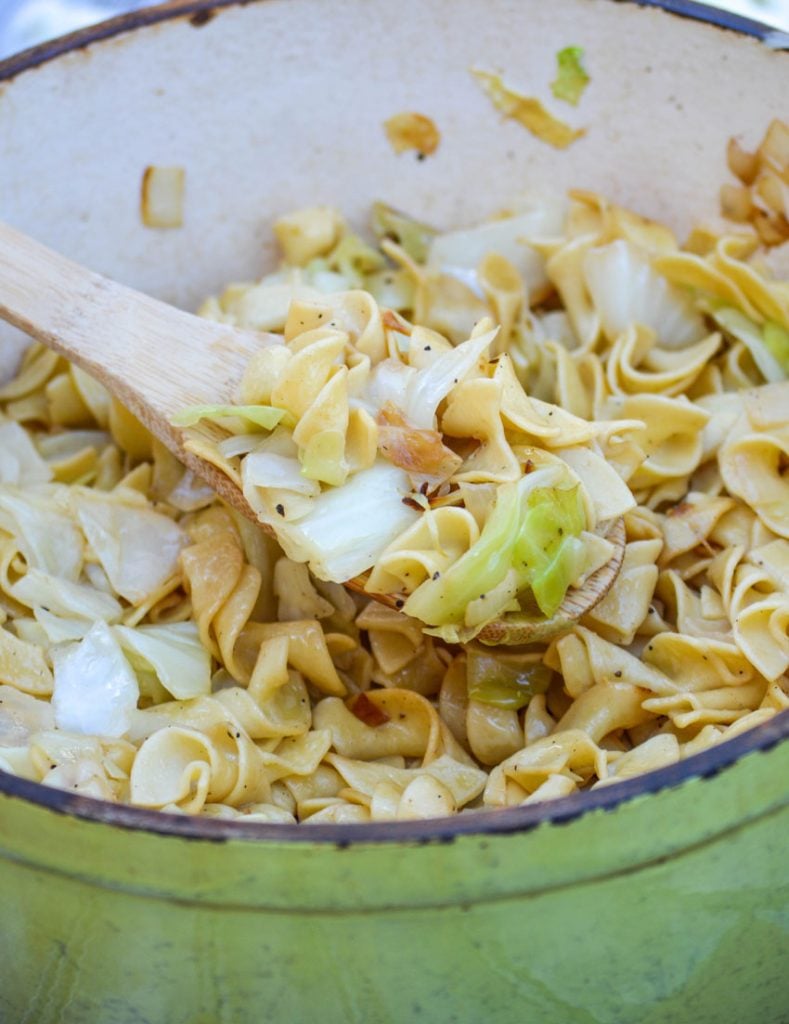
What is Haluski and how do you pronounce it?
Haluski is the ultimate in simple, affordable Old World comfort food. For real!
According to my MIL it’s pronounced ha-loosh-key, but also commonly referred to as ha-loosh-ken.
Neither of us is sure of what the small difference indicates.
What we both ultimately agree on? It’s incredibly delicious.
My kids grew up with buttered noodles being one of their favorite food groups. I mean plain noodles bathed in butter.
Haluski takes that idea, but does it so much better. But with so much butter.
What’s a clogged artery or two when authentic comfort food’s on the line though?!
Haluski is basically pan fried noodles and cabbage, lovingly sauteed in a butter bath.
Bacon or kielbasa are optional ingredients to add some meat to the dish, and extra savory flavor.
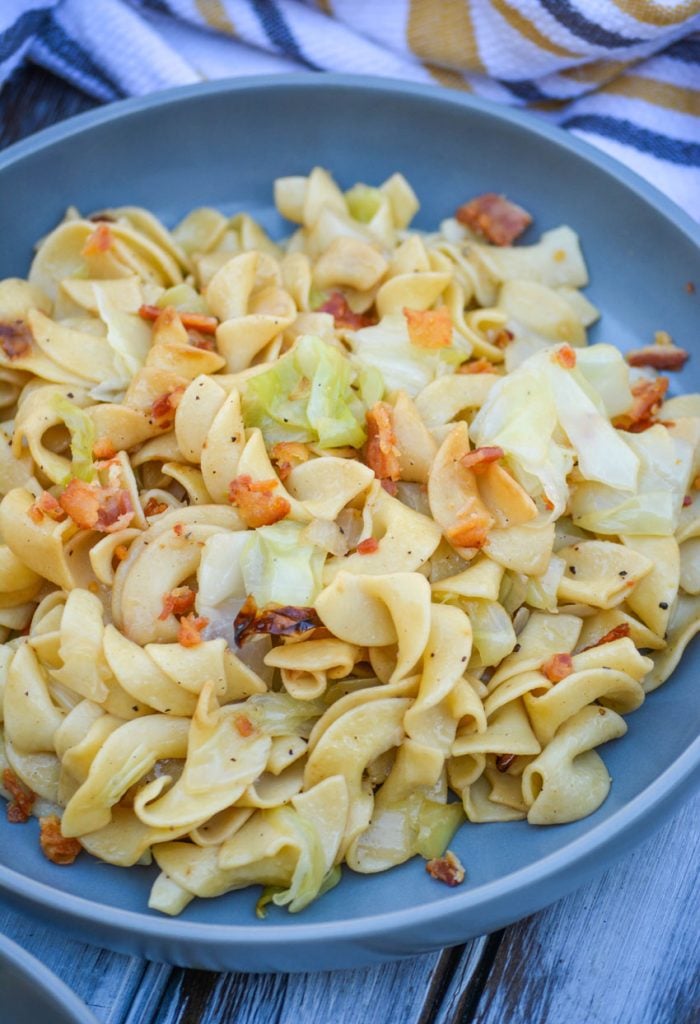
How do you make a traditional Haluski?
Haluski may be a national comfort food in Poland and Czechia, but they’re also a traditional regional food in the States.
Specifically in the Pittsburgh region of Pennsylvania, and it’s a beloved ‘Burgh staple enjoyed by all- whatever their heritage.
This explains a lot too, as this is where my In Laws and the entire extended family now hails from.
A traditional haluski recipe requires very basic ingredients, but they’re key: butter, cabbage, onions, and egg noodles.
The traditional version requires delicious pasta noodles made from scratch with homemade dough.
Usually I love recipes from scratch, but I don’t always have time for them.
I adore haluski for many reasons, one of which is it’s simplicity.
So for this recipe, I totally recommend saving yourself some time and opt for store bought egg noodles instead.
Six tablespoons of butter (told ya copious amounts of butter were involved) are melted in a large Dutch oven.
You could use a regular soup pot, but I’ve found the sturdy cast iron enameled style Dutch ovens lead to more even cooking and caramelization.
To the melted butter, add about a pound of chopped cabbage. Just the green leaves.
Make sure to carefully cut your cabbage and discard the bitter core.
Add a roughly chopped white onion and toss everything to coat.
Cook the mixture over medium high heat, stirring occasionally, until the leaves are tender and have begun to caramelize.
Melt another two tablespoons of butter in the pot, and stir in the now cooked and drained pasta noodles.
Salt & pepper the mixture, to taste and serve immediately.
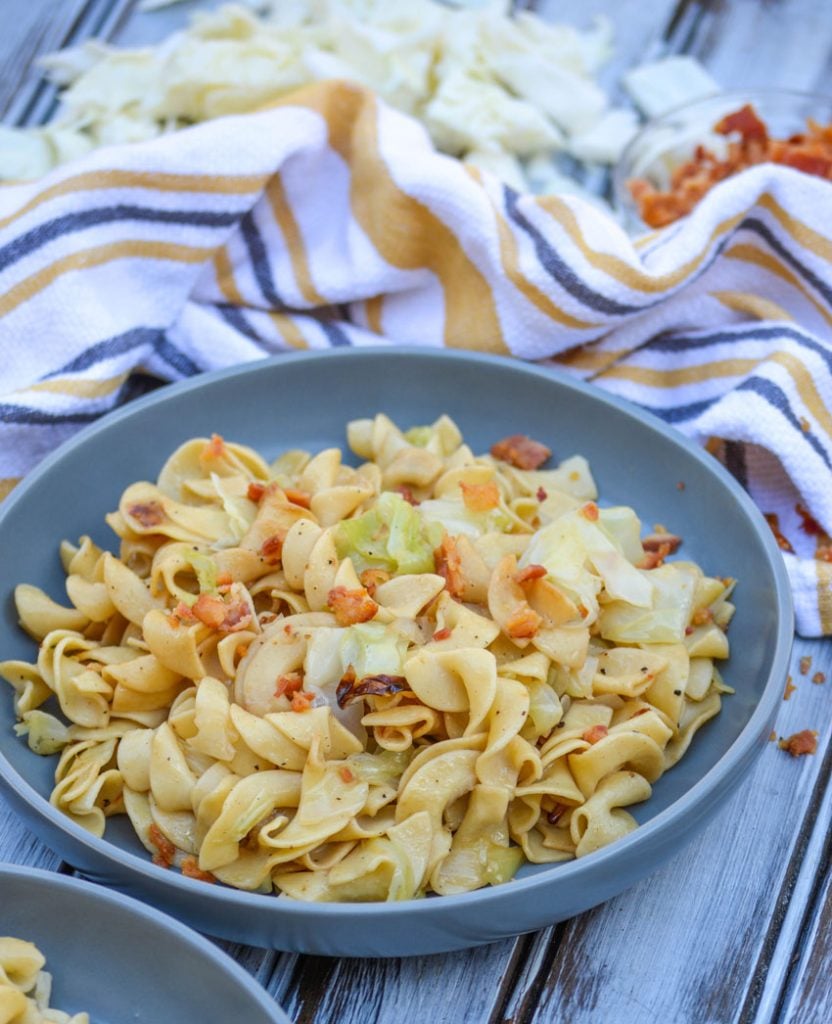
Making a heartier meal- What meats can I add to Haluski?
While I can totally appreciate a meatless meal for a variety of reasons (hello, the Lenten season!), I tend to make and serve things that include some form of protein.
Not always meat, but typically.
I wouldn’t advise adding fish to this, but it would pair well as a delicious side to a salmon supper.
If you’re wanting to add an infusion of flavorful protein to the pot, I’m going to suggest you stick with pork.
Some kind of pork.
We like ours with a bit of freshly cooked crisp & crumbled bacon.
I’ve even been known to swap add a teaspoon or so of the drippings for some real extra flavor in every bite.
With bacon grease a little goes a long way, so a ton isn’t needed.
Another option is kielbasa.
Sliced into coins and sauteed until nicely browned, they’re a great addition to this dish. Plus they’re from the same region, making them a natural pairing.
You can also use ground sausage.
Saute it in a separate skillet, breaking and crumbling as it cooks.
When it’s cooked through, drain it well to remove excess fat- then add it in when you’re ready to stir in the pasta noodles.
Other traditional ways to serve authentic Haluski:
I’m not the only one who likes to change things up occasionally. The original culture does too!
While they’re some debate over where the actual origin is (looking at you Hungary), and many Pittsburghers swear it’s a local delicacy- everyone agrees, the dish is good as is but can be made even better with some add ins.
Not just meat either!
There’s two different trains of thought on which ingredient to use, but a large number of family’s that traditionally eat this dish swear by making it creamy.
They fall into two clear categories: sour cream & cottage cheese.
Both are equally delicious add ins, and since both ingredients are cold when they’re added is important.
We tend to like cottage cheese if we’re going meatless because it’s a great way to not only achieve the creamy element, but to also get some extra protein in there.
The cheese (or sour cream) needs to be added and quickly stirred in as soon as the hot haluski is taken off the heat. This will prevent any curdling, and also allow the mixture to still be served warm.
I recommend adding 1 1/2 cups of cottage cheese or sour cream, stirring, and then accessing before deciding if more is needed.
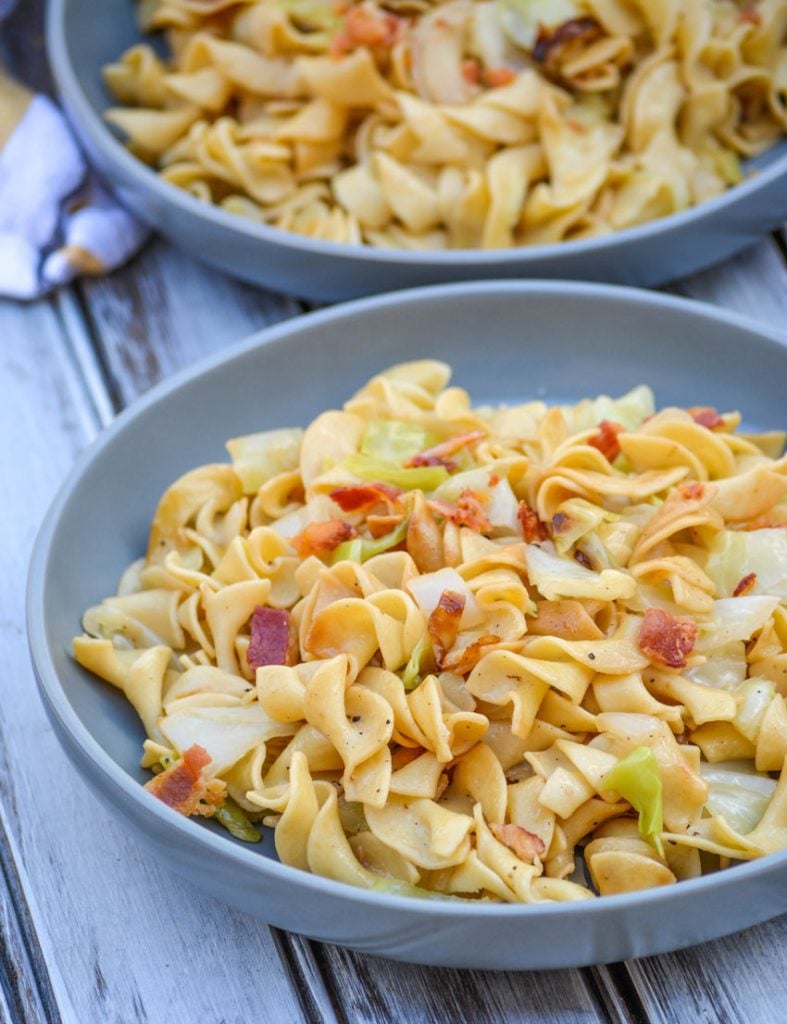
This haluski recipe is as authentic as it gets, and even better- it’s a great way to embrace a new meal from a different culture.
Braised in butter and caramelized to just the right degree, it is my favorite way to get the whole family excited about cabbage.
It was a great way to bring a little bit of her childhood back for my Mother In Law, and a great conversation starter about the subject with the sons.
Other Tasty Ways To Enjoy Eating More Cabbage:
If you’ve tried this HALUSKI RECIPE, or any other recipe on my site, let me know in the comment section how it turned out, we love hearing from our readers! You can also follow along with me on PINTEREST, FACEBOOK, and INSTAGRAM to see more amazing recipes and whatever else we’ve got going on!
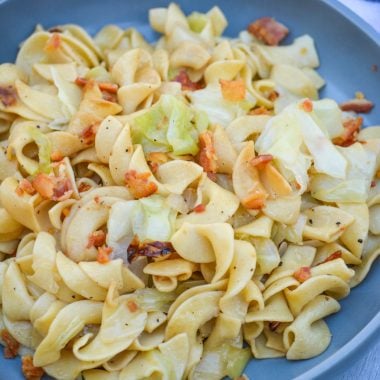
Haluski (Polish fried cabbage & noodles)
Ingredients
- 8 oz wide egg noodles uncooked
- 8 tbsp butter
- 1 small white onion roughly chopped
- 1/2 large head of cabbage
- salt & pepper to taste
- crisp, crumbled bacon optional
Instructions
- Fill a large pot half way full with water. Lightly salt it, and over high heat bring the water to a boil.
- Once boiling, pour in the egg noodles, stir, and cook according to the package directions. Transfer the noodles to a colander when done, and drain away all excess water.
- While the noodles are cooking, get started on the cabbage by adding 6 tablespoons of butter to a large Dutch oven set over medium heat.
- Once the butter's melted, stir in the cabbage and onion. Cook the mixture, stirring occasionally, for 15-20 minutes or until the cabbage has browned/caramelized and is tender. Salt, to taste.
- Melt the last two tablespoons of butter in the pot, and add the cooked pasta to the pot, stirring everything to coat. Cook just long enough for the noodles to heat through.
- If using, stir in the bacon and season the haluski with freshly grated black pepper, to taste.
- Serve immediately, and enjoy!
Nutrition

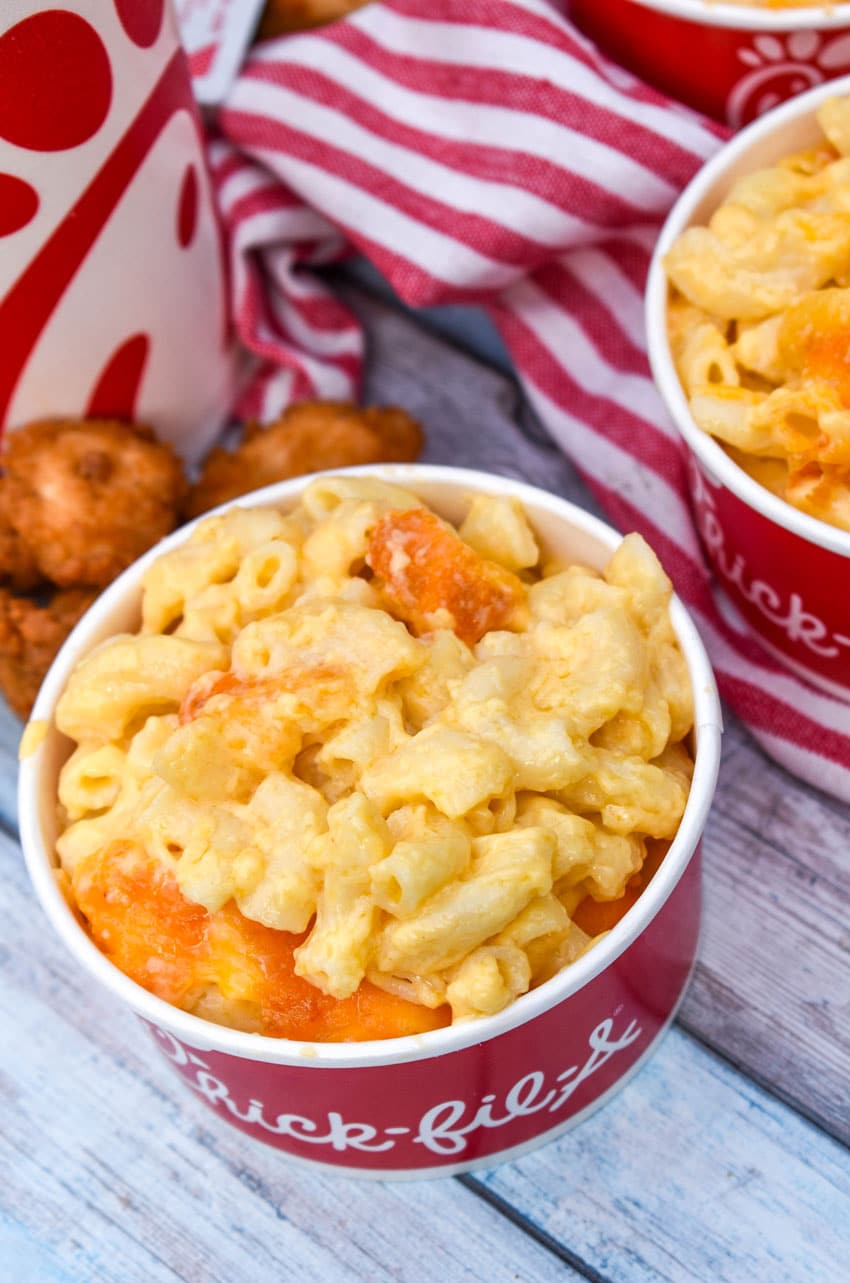
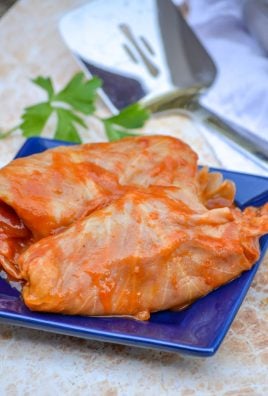

1 rekening hanya bisa 1 akun ya bosku
How about we stop referring to this dish as Polish, which it isn’t. Haluski is a Slovak word for a potato dumpling. The Polish version of your noodle cabbage concoction, is kapusty z lazanki. Kapusta being the Polish word used for cabbage, Lazanki a square egg noodle, common to Lithuanian, Ukraine and Poland. The origins of your haluski dish, can be traced to Bona Sforza d’Aragona the 16th century Italian princess, who became the queen of Poland and the Grand Duchess of Lithuania. Who introduced Italian high cuisine to Poland. Our beloved Pittsburghese dish haluski, was likely created buy a Slovak, or Ukrainian grandmother how substituted store bought egg noodles for her homemade potato dumplings.
How about you not be a know it all asshole?!?!
dude you are 100% wrong do your research before commenting…it’s embarrassing
Ok, Karen. Haluski is a Noodles and Cabbage dish of Polish and Slovakian origin although there is some disagreement from the Ukrainians and Hungarians. No matter where it originated from it is delicious comfort food. Polish Haluski recipes are all over, there’s no law being broken by calling it Polish.
Ok Karen ? You’re assuming I’m female, because my name is Lee and I’m interested in cooking. I’ll be sure not to visit your site in the future. The last place I thought I’d encounter a cancel culture liberal would be on a website about cooking haluski.
You ok hun?
Lee, I’m a 67 year old man, and by no definition am I a liberal, but even I know the term ‘Karen’ loosely is a slang term for an obnoxious, angry or entitled person. Something I felt more or less fit after reading your first sentence. I suppose the first thought that came to my mind was “don’t get your panties in a bunch”, and I didn’t think you were a woman. The last thing I expected when coming to look at a recipe for something I’ve eaten at Family Reunions since I was a child, (and always made by my relatives of Hungarian ancestry) was someone getting angry and giving a history lesson on it’s origins. Take a deep breath, sit back and then just move on. You can’t make things any better with more comments, only worse. 😉
Making this tonight! I have left over cabbage that needs a home so this is it!!!!
This is one of my favorite ways to enjoy leftover cabbage, Carol!
I made this today. It was delicious and easy. I added cottage cheese to up the protein content. Thanks for sharing your recipe. This is a keeper.
A nice recipe I cook a variation of it myself but we call it Pasta with Cabbage. Haluski or Halusky as we call it in Slovakia (our national dish when served with special sheep “bryndza” cheese) are NEVER noodles!!! Small home made dumplings and nothing else.
It is as if you had Mac and Cheese and call it Spaghetti. What would Italians say?
To make real traditional halusky is easy but to buy ready to cook noodles is obviously easier. :-D
See the picture in Wikipedia for real halusky.
https://en.wikipedia.org/wiki/Halu%C5%A1ky
Thanks for the comment Peter. My MIL’s mother came over from Poland as a child with her parents (she’s half Polish/half Slovak) and this is her Mother’s recipe. Maybe she subbed noodles because it was more convenient?
This was so easy to make. It taste like my mom’s thank for the recipe it was a four star meal
Excellent Haluski recipe, I added some bacon as that was how my dad made it. Brought back some old memories and a good side dish for a holiday.
Everybody in my Polish family loves Halushka!!
One other suggestion which my husband loves:
Brown up one pound of ground round first and then add it to the sautéed cabbage, onions and then the noodles!
A complete meal and the men love it!
Add a tbs of bacon grease to the butter for sautéing!
SO delicious!,
I got this recipe from a Sister n law who added sliced almonds and it is delicious where ever it was originated, it is a delicious filling dish!
I will defiantly fix again. Easy and nutritious. I used the cottage cheese and turned out great! However I used less butter (a total of 4 tablespoons), but still too fatty for me. I’ll use less next time. And non- fat cottage cheese was just fine. Also, trying to use up some paprika and herb savory so added that, which I think also added something .
This is a recipe on how to make Halusky without Halusky. Halusky is the name of the “noodles” that you make from scratch. So if you’re substituting them for pasta, it might be more convenient, but you’re not making Halusky anymore. You’re making pasta.
It’s the same as putting some tomato sauce and mozarella on a slice of white bread and calling it Pizza.
People, can we just enjoy the recipe? I also am Polish and whatever I refer to as this dish is not disrespectful to any ethnic group. The recipe is wonderful, just enjoy it and call it whatever you like.
Really folks, if you want to debate the merits of the origin of the name of the recipe, maybe this place is not for you. My grandparents were Polish and Italian so I guess Grandma merged the two and this is what we had and called it Halushki. And thanks to the folks that took the time and effort to put their recipe out there!!Bon Appetit
This is a great recipe! And as for all you petty little bitches, shut up, stay out of the kitchen and don’t forget to take your pulpits with you.
My MIl hails from Czech/Slovakia, and this is a dish that was always made since when she was a little girl, and I only know this as she commented on foods she grew up on. Imagine my surprise finding it here. I can’t wait to make it for her when she comes to visit. Thank you so much!
TY for all of your receipe versions. I use hamburger,noodles,onions,& fresh garlic. Cook my onions & cabbage in olive oil. Pepper with butcher pepper. At the end when I toss it all together that’s when I add butter. My boys Love it!!Please don’t talk mean to each other it’s not nice.
I was wondering if olive oil would be ok replacement – How nice of you to share your knowledge ;-)
Hi everyone – ok, I am 100% Slovak, and halušky are Slovakia’s national dish. Halušky are potato dumplings traditionally served with Brynza (soft sheep milk cheese, very similar to feta cheese). The most authentic version of halusky involves only three ingredients: potatoes, salt and flour. They look like little dumplings and are served with bacon. There are different versions, including ones made with cabbage or sauerkraut instead of the cheese. It is an easy dish, but like most of Slovak cooking very technique sensitive.
The Slovaks also make a cabbage dish with butter and egg noodles, as is described here. When my mom made it, she did not use bacon, sour cream, or onion. While egg noodles were cooking, she melted lots of butter. When it was foaming, she put in about 2 tablespoons of icing sugar, letting it briefly caramelize before adding well salted chopped cabbage. This was tossed, covered and left to stew while the noodles finished cooking. After the noodles were drained, she mixed them with the cabbage and served with freshly ground black pepper. She simply called it “noodles with cabbage”, and we all loved it. Leftovers were reheated in a covered non stick pan over low heat, allowing the cabbage to caramelize further and be even more delicious.
What a lovely post. So nice of you to share some Eastern European recipes. :)
Great recipe.. Only thing is, adding bacon to this is not authentic polish cuisine. Adding bacon is Ukraine recipe. Other than that it’s awesome
I sometimes add braised pork ( lean ) also some caraway to flavor. Adding carmelized butter to stir in before serving. Yummms
Hi, I am from Slovakia, and i just want to correct you, thats not halušky, halušky are not made from pasta but main ingredient is potato. This looks closer to grenadier marsh (grenadírsky pochod) dish. Halušky are made from potatoes, bryndza (variation of salty sheep cheese) and roasted bacon cubes. You can make them also without bryndza and you can also make them with cabbage
https://www.youtube.com/shorts/lsrwWOlmpwE – short clip about making them
Made a 1/2 recipe tonight for me with planned leftovers for another day. I made it as suggested without any of the extras because I’d had a big lunch. This was soooo good! This makes two cabbage and noodle recipes I love. (The other is soy sauce spaghetti with cabbage and a fried egg.). Cabbage pasta a long time in the fridge and I often have some so this is a perfect pretty fast meal easily adjustable for more servings or fewer. I might try it with sour cream next time!
I’m so happy you enjoyed this dish as much as we do, Ellen- thanks for taking the time to leave a review. I hope you’ll try more of our recipes in the future :)